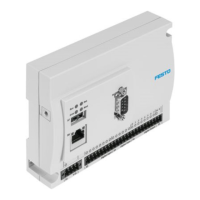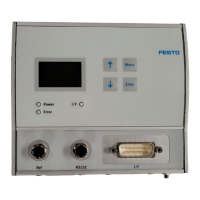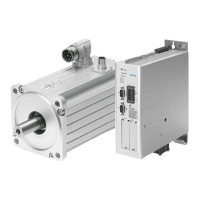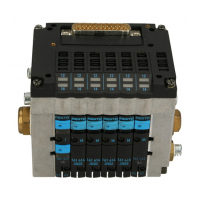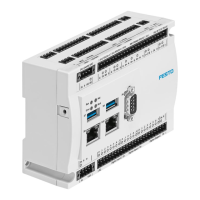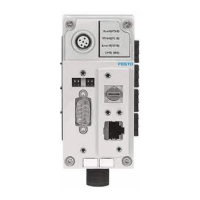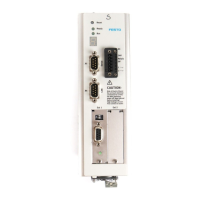Festo Controller CECC
62
4.13 PLC shell
The PLC shell is a text-based controller monitor (terminal). Commands for requesting certain information
from the controller are entered in an input line and sent to the controller as a string. The returned response
string is displayed in a results window in the browser. This functionality is used for diagnostic, debugging
and configuration purposes.
To use the PLC shell:
1. Highlight the device (CECC) in the Codesys device window.
2. Double-clicking the device opens a new "Device" tab in the editing window for configuring the CECC.
3. Open the "PLC shell" sub-tab.
Figure: CECC editing window with "PLC shell" sub-tab
An online connection between Codesys and the CECC is required for communication using the PLC shell
( section "Online mode"); if necessary, a temporary connection to the device in the active path is
established.
The target system ID of the controller in the active path must be the same as the device type in
the project.
The list of standard commands for any target systems can be found in the online Help for CODESYS V3
pbF. The following commands are additionally available for the CECC.
Command Comment
getdevinfo Shows all information about the device.
gethostname Shows the host name of the device.
sethostname <hostname> Sets the host name of the device.
getserial Shows the serial number of the device.
getfwversion Shows the firmware version of the device.
getvendorname Shows the name of the device vendor.
getuniqueid Shows the unique ID of the device.
getsysversion Shows the system version of the device.
getmacaddr Shows the MAC address of the device.
getipaddr Shows the current IP address of the PLC.
getipconfig Shows the IP configuration: IP address, DHCP, settings after
restart, etc.
setipconfig <IP-address> [<subnet-
mask> [<gateway> [<dns-server>]]]
[dhcp|nodhcp]
Sets the IP configuration (transferred after restart).
Examples: setipconfig 192.168.2.20; setipconfig nodhcp
